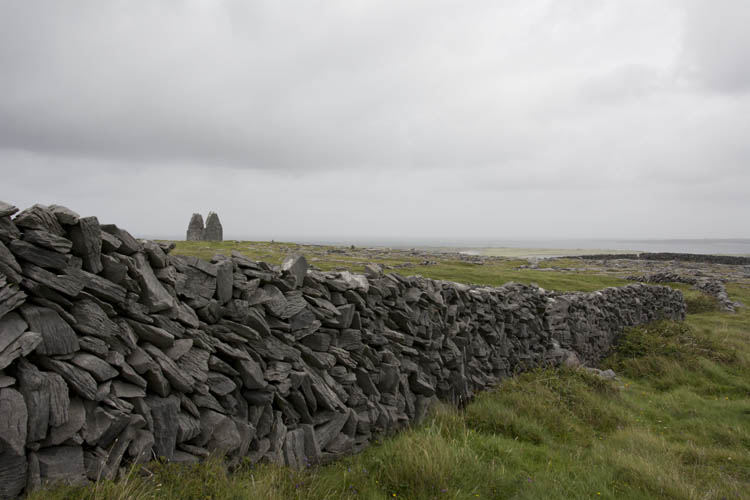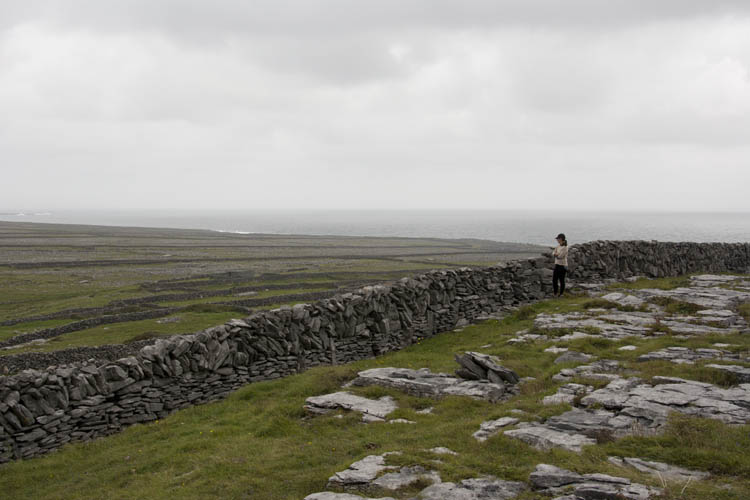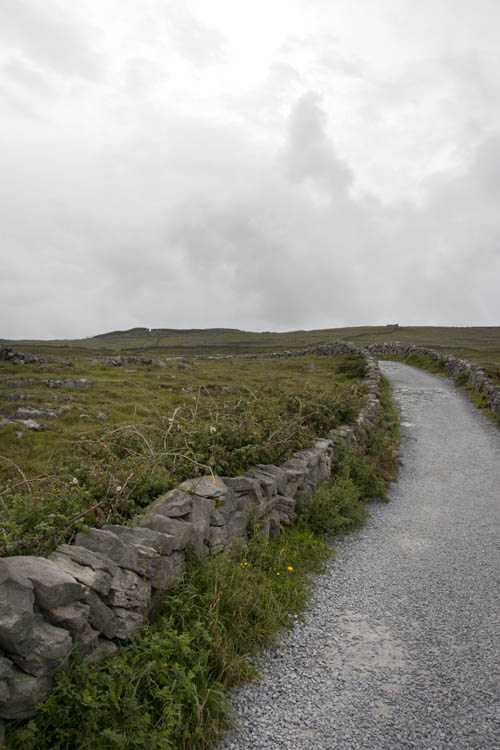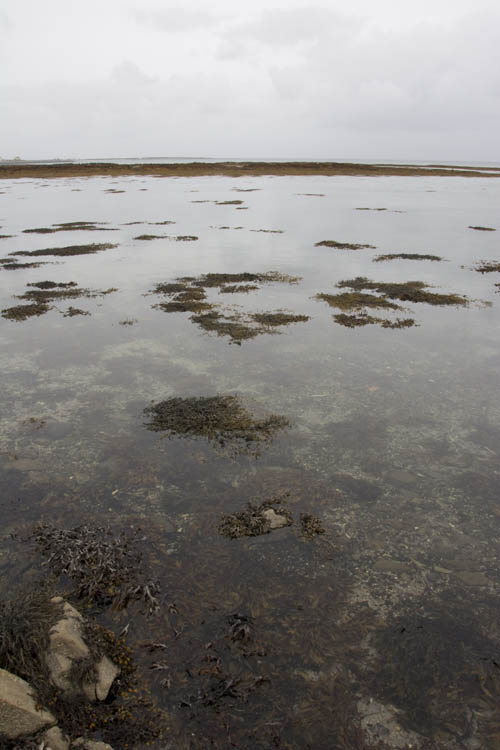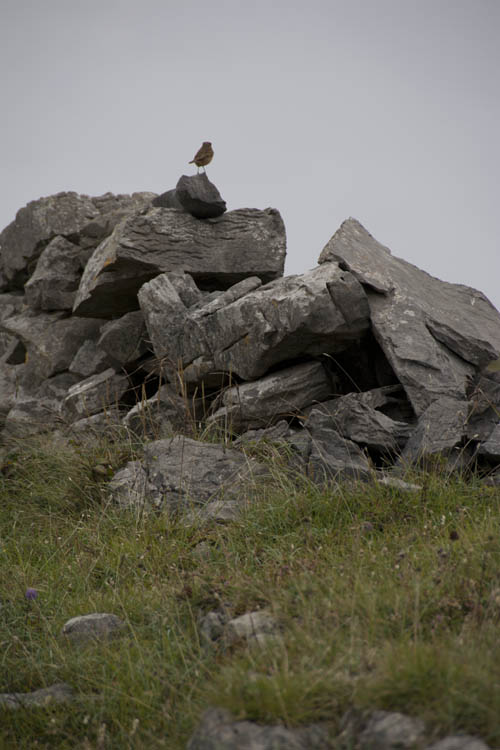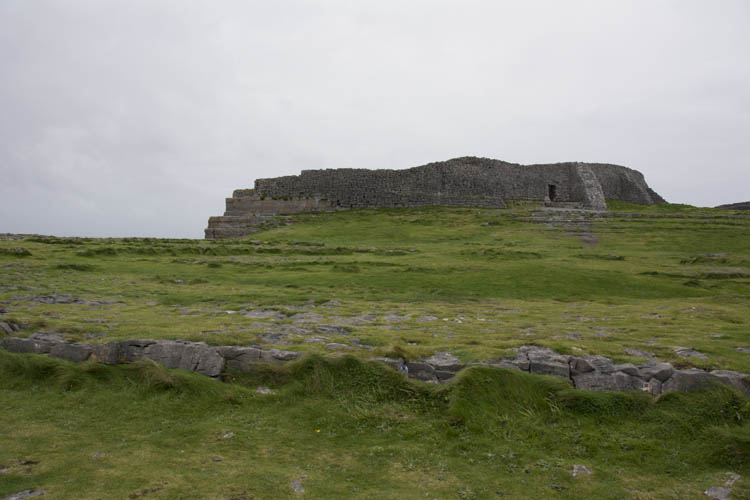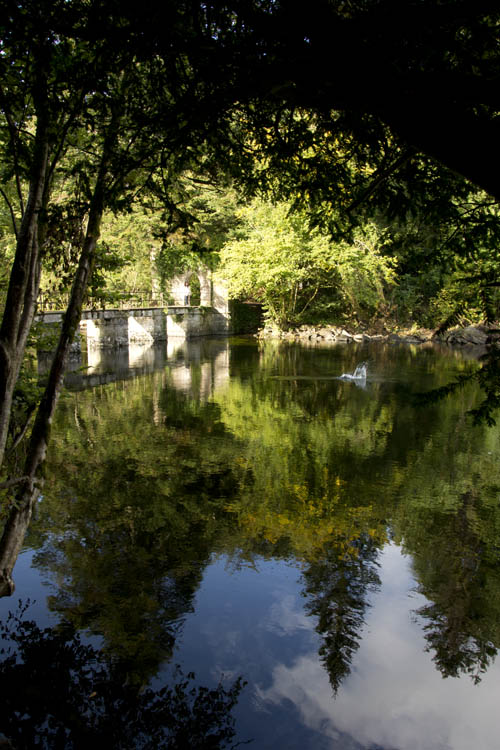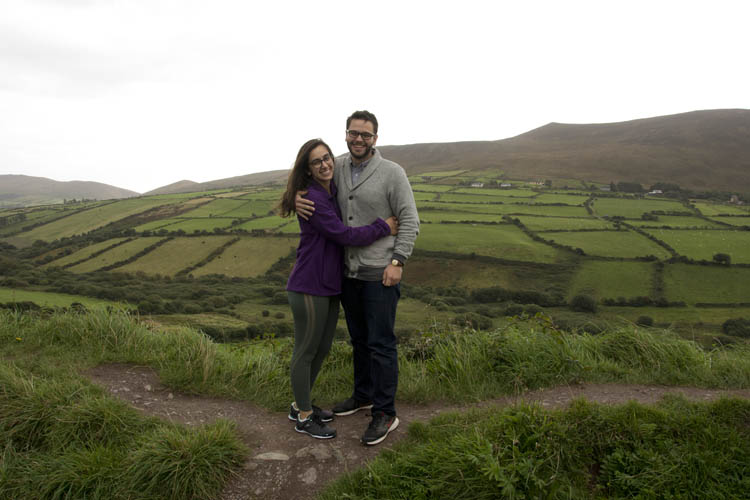After an amazing time in Dingle, we decided we wanted to check out one of the more far-flung places in Ireland: The Aran Islands. Specifically we were off to Inis Mór, which I'd been warned would be empty, bleak and beautiful. It sounded perfect.
We had to leave early for a 5 hour drive to make the ferry to the island, and the drive was often treacherous. At sunrise we were driving on the edge of a cliff with angry Irish commuters behind us trying to pass us at every turn. We sweated a little, but in the end made it up to Galway where we gladly left the car behind and jumped on the ferry.
The 1 hour ferry ride to Inis Mór was bumpy, but uneventful after our long car ride
There are very few cars on the island, so we rented bicycles (good chance to burn off the Guinness calories) and set off to explore. The landscape was bleak to say the least, but it moved you in a way that a beautifully written sad story does.
Shades of blue and grey on the beach
The island is incredibly rocky, so when the first people moved there they spent a lot of time clearing the fields to make them usable. This resulted in seemingly never-ending stone walls that were cleverly built so that parts of them could be dismantled to let the animals through without ruining the rest.
Stone walls as far as the eye could see
We made our way up to a ruin that looked like something out of a tacky beginning to a Transformers movie: St. Benen's Church (Teampull Bheanáin). Built in the 10th Century and dedicated to a young disciple of St. Patrick, there was something oddly calming about the stone ruin.
We continued our way the "blockbuster" tourist destination of the island, the Dun Aengus (Dún Aonghasa) fort. It was further than I had anticipated, and my legs had turned to jelly by the end of the bike ride.
The Iron Age fort itself is on a cliff and part of it has fallen into the sea, making it an interesting, partially complete circle looking out over the vastness of the Atlantic Ocean.
Even in the Iron Age humans were into cool views (and incredible fortification)
The cliffs were beautiful, scary and without any safety bars. Between that natural fortification and the thick walls of the fortress, I'm certain these settlers felt safe, albeit cold.
After the fort, we headed to the one major pub of the island to enjoy a well-deserved meal, plenty of beer and great Irish music. Inis Mór had been everything we hoped and more, and the next day we prepared to get back to the mainland.
A dark and beautiful goodbye to the Aran Islands
Back on the road again, the scenery transformed as we moved inland. There were creeks, rivers and lakes at every turn, and a pervasive, alien looking yellow moss.
Water and moss
As we drove to our next stop, it was hard not to jump out every couple minutes to take a picture. The scenery changed again as green grass took over, punctuated by wildflowers and sheep.
At times it felt like I was in a simulation of what someone thought Ireland should look like
We made our way to Kylemore Abbey, which sounds and looks a lot older than it actually is. Built in the early 20th century, it has changed hands three times, was partially ruined by a megalomaniac American woman and is now owned by Benedictine nuns.
A small part of the castle's grounds
Finally, it was time to start making our way to Dublin, but not without a quick stop at the beautiful town of Cong. We had the opportunity to eat in the fantastic Ashford Castle, where for a couple of hours we felt like you were in a different century. One of the big highlights of Cong though was the few minutes that the sun truly shone, and lit up the nature and scenery.
When the sun shines in Ireland and the fish start jumping
And that's the end of my study of the Irish countryside! Thank you for reading and I hope this inspired you to visit this beautiful country. It was one of the most wonderful experiences of my life, both photographically and otherwise. A big thank you to Rick Steves, whose book on Ireland took us to all these great places.
Thank you for reading!




